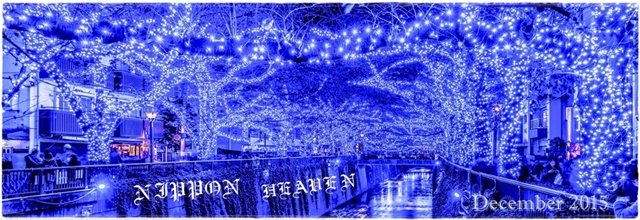| May 2024 | | Mon | Tue | Wed | Thu | Fri | Sat | Sun |
|---|
| | | 1 | 2 | 3 | 4 | 5 | | 6 | 7 | 8 | 9 | 10 | 11 | 12 | | 13 | 14 | 15 | 16 | 17 | 18 | 19 | | 20 | 21 | 22 | 23 | 24 | 25 | 26 | | 27 | 28 | 29 | 30 | 31 | | |  Calendar Calendar |
|
| Partnership |   |
| | | Ikebana |  |
| | | Author | Message |
|---|
Sakura
Moderator


Posts : 271
Join date : 2010-08-15
Location : Japan
 |  Subject: Ikebana Subject: Ikebana  Thu Sep 27, 2012 12:47 pm Thu Sep 27, 2012 12:47 pm | |
| Ikebana (生け花 - "living flowers") is the Japanese art of flower arrangement, also known as kadō (華道 - the "way of flowers"). Possible translations include "giving life to flowers" and "arranging flowers". More than simply putting flowers in a container, ikebana is a disciplined art form in which nature and humanity are brought together. Contrary to the idea of floral arrangement as a collection of particolored or multicolored arrangement of blooms, ikebana often emphasizes other areas of the plant, such as its stems and leaves, and draws emphasis toward shape, line, form. Though ikebana is a creative expression, it has certain rules governing its form. The artist's intention behind each arrangement is shown through a piece's color combinations, natural shapes, graceful lines, and the usually implied meaning of the arrangement. Another aspect present in ikebana is its employment of minimalism. That is, an arrangement may consist of only a minimal number of blooms interspersed among stalks and leaves. The structure of a Japanese flower arrangement is based on a scalene triangle delineated by three main points, usually twigs, considered in some schools to symbolize heaven, earth, and man and in others sun, moon, and earth. The container is a key element of the composition, and various styles of pottery may be used in their construction. The spiritual aspect of ikebana is considered very important to its practitioners. Silence is a must during practices of ikebana. It is a time to appreciate things in nature that people often overlook because of their busy lives. One becomes more patient and tolerant of differences, not only in nature, but also in general. Ikebana can inspire one to identify with beauty in all art forms. This is also the time when one feels closeness to nature which provides relaxation for the mind, body, and soul.    | |
|   | | Sakura
Moderator


Posts : 271
Join date : 2010-08-15
Location : Japan
 |  Subject: Re: Ikebana Subject: Re: Ikebana  Thu Sep 27, 2012 12:54 pm Thu Sep 27, 2012 12:54 pm | |
| The truth about the origin of Ikebana is unidentified. But when the Buddhism reached Japan in the 7th century, it is thought to have come to Japan as part of Buddhist practice. The offering of flowers on the altar in honor of Buddha was part of worship. Ikebana evolved from the Buddhist ritual of offering flowers to the spirits of the dead. The first classical styles of Ikebana started in the middle of the fifteenth century; the first students and teachers of Ikebana were Buddhist priests and members. As time passed, other schools emerged, styles changed, and Ikebana became a custom among the Japanese society.
The history of ikebana dates back approximately 500 years ago and the history of Ikenobō — the oldest school of ikebana. The school dates its beginnings from a priest of the Rokkaku-dō Temple (六角堂) (the official name is Shiun-ji or Purple Cloud Temple 紫雲寺) in Kyoto who was so skilled in flower arrangement that other priests sought him out for instruction. As he lived by the side of a lake, for which the Japanese word is 'Ikenobō' "池坊", the name Ikenobō became attached to the priests there who specialized in these altar arrangements.
The Rokkaku-dō temple was erected in 587 by Prince Shōtoku (聖徳太子; Shōtoku taishi). It is said that Prince Shōtoku was searching for materials to build the Shitennō-ji Temple (四天王寺). During his search, one day he went to bathe in a pond, where he hung a Buddhist amulet over a nearby tree. After his bath, he tried to remove the amulet, but he was unable to do so. That same night, the Prince saw the Buddha in his dream. The Buddha instructed him to erect a temple near the pond at the cedar tree under a purple cloud. From that cedar, Rokkakudō temple was built to house a Kannon (Guan-Yin) statue.
Patterns and styles evolved so that, by the late 15th century, arrangements were common enough that they were appreciated by ordinary people, not just the imperial family and its retainers.
Ikebana in the beginning was very simple, constructed only a very few stems of flowers and evergreen branches. This first form of ikebana is called Kuge (供華).
Styles of ikebana changed in the late 15th century and transformed into an art form with fixed instructions. Books were written and Sedensho is the oldest one, covering years 1443 to 1536. Ikebana became a major part of traditional festivals, and exhibitions were held occasionally.
The first styles were a tall, upright central stem that had to be accompanied by two shorter stems. During the Momoyama period, 1560–1600, splendid castles were constructed. Noblemen and royal retainers did large decorative Rikka floral arrangements that were the most appropriate decoration for the castles.
The Rikka (standing flowers) style was developed as a Buddhist expression of beauty of nature. It includes seven branches representing hills, waterfalls, valleys, and other objects of nature arranged in a specific way.
When the tea ceremony emerged, another style was introduced. The style used for tea ceremony rooms was called Chabana. The Chabana style is the opposite of Momoyama style and emphasized rustic simplicity. The simplicity of the Chabana in turn helped create the Nageire or “thrown-in” style.
Nageire is a non-structured design which led to the development of the Seika or Shoka style. The style is characterized by a tight bundle of stems that form a triangular three-branched asymmetrical arrangement which was considered classic.
Seika or Shōka style consists of only three main branches, known as 'ten' (heaven), 'chi' (earth), and 'jin' (human). It is a simple style that is designed to show the beauty and uniqueness of the plant itself.
Jiyūka is a free creative design. It is not confined to flowers; every material can be used.
In the 20th century, with the advent of modernism, the three schools of ikebana partially gave way to what is commonly known in Japan as Free Style.
Ikebana arrangement:
-Moribana upright style - is considered as the most basic structure in ikebana. Moribana literally means “piled-up flowers” that are arranged in a shallow vase or suiban, compote, or basket. Moribana is secured on kenzan or needlepoint holders, also known as metal frogs.
-Moribana slanting style - is the reversed arranging style that can be used depending on the placement of the display or shapes of the branches. Branches that look beautiful when slanted are mostly chosen for this arrangement. This style gives a softer impression than the upright style.
-Nageire upright style - is arranged in a narrow-mouthed, tall container without using kenzan or needlepoint holders. Nageire literally means "thrown in". This is a simple arrangement that can contain just one flower and does not use frogs to hold the flower(s).
-Nageire slanted style - presents a gentle touch and flexibility. It is ideal for ikebana beginners.
-Nageire cascading style - arrangements have the main stem hanging lower than the rim of the vase. A flexible material will create beautiful lines balancing with flowers. | |
|   | | Sakura
Moderator


Posts : 271
Join date : 2010-08-15
Location : Japan
 |  Subject: Re: Ikebana Subject: Re: Ikebana  Thu Sep 27, 2012 12:56 pm Thu Sep 27, 2012 12:56 pm | |
| | |
|   | | Sponsored content
 |  Subject: Re: Ikebana Subject: Re: Ikebana  | |
| |
|   | | | | Ikebana |  |
|
| | Permissions in this forum: | You cannot reply to topics in this forum
| |
| |
| |

